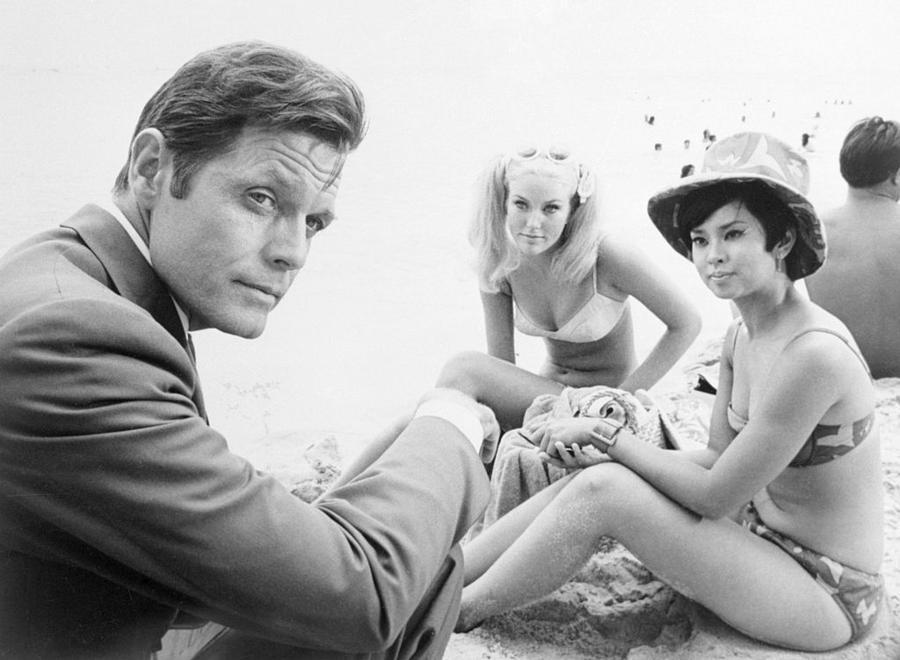When you pass away, what will be your legacy? Whether we are willing to acknowledge it or not, we all want to leave something special behind. We all want to be remembered for greatness. However, “greatness” means different things to different people.
For some people, greatness means leaving behind a successful business or a secure family. For some, greatness means leaving behind a major invention or work of art.
For others, greatness can be about leaving behind a gift. For 1970s actor Jack Ward, greatness meant leaving behind a gift. A surprisingly large gift that would keep on giving for many years after he was gone, benefitting the people of the state that made him famous… and rich…
(via Getty)
Early Life
Jack Lord, also known as John Joseph Patrick Ryan, was born on December 30, 1920, in Brooklyn, New York. The young Jack was an interesting mix of contrasts. He was an excellent horseman, learning to ride on his mother’s fruit farm in upstate New York. He also spent many summers at sea and showed real talent as a painter. He often painted landscapes of the countries and lands he passed by boat, including China, the Mediterranean, and portions of the coast of Africa. He went on to attend the United States Merchant Marine Academy and graduated as an Ensign. From there, he secured a football scholarship to New York University, where he earned a degree in Fine Arts. He then built bridges in Persia during World War II and also began appearing in training films for the Merchant Marine.
Acting Career
The training films were his first experience with acting, but he was almost instantly hooked. When he returned to New York, he began working in sales in order to fund his newfound interest in performing. He worked as a car salesman for both Ford and Cadillac in order to pay for his classes with Sanford Meisner at the Neighborhood Playhouse and for his courses at the Actors Studio. He appeared in his first commercial film project, “The Red Menace,” in 1949. However, it wasn’t until 1954 that his hard work really began to pay off. That year, he made his Broadway debut in “The Traveling Lady” by Horton Foote. He earned a Theatre World Award for his work, and it was clear that he was a star on the rise.
He went on to appear in the Broadway production of “Cat on a Hot Tin Roof” the following year. From there, more film work beckoned. He starred in 1957’s “Williamsburg: The Story of a Patriot” and 1958’s “God’s Little Acre.” He originated the role of Felix Leiter in the James Bond film “Dr. No,” and then starred on the television series, “Stoney Burke.” He also appeared in guest starring roles on such shows as “The Americans,” “Bonanza,” “High Chaparral,” “The Man from U.N.C.L.E.,” “Rawhide,” and “Ironside,” among many others. Famously, he was offered the role of Captain James T. Kirk on “Star Trek” after contract negotiations with Jeffrey Hunter fell apart. However, when Lord asked for 50 percent of the show, Gene Roddenberry cast William Shatner instead, and the rest is sci-fi history.
Hawaii 5-0
In 1968, he began appearing as Steve McGarrett on the cop show, “Hawaii 5-0.” The popular cop show ran for the next twelve years. His signature line, “Book him, Danno!” became a catchphrase. In Hawaii, he became known for insisting that native Hawaiians appear on the show as much as possible rather than casting actors from the mainland and flying them in. He also insisted that his character drive cars made by Ford, in a nod to the career that supported him during his early acting career.
A Surprisingly Large Surprise
In 1988, the couple established a charitable fund with the Hawaii Community Foundation, seeding it with an initial $50,000. They personally selected 12 local charities to support, reflecting causes close to their hearts. Jack and Marie had no children, and it became clear that they viewed the Hawaii community as part of their ‘ohana. Over time, they continued adding to the fund. By the time Jack died in 1998, they had given the foundation $750,000.
Jack’s wife, Marie Lord, lived to be 100 years old. She safeguarded their charitable vision until her death in October 2005. Upon her death, the state of Hawaii learned that the couple was leaving the value of their entire estate to the Hawaii Community Foundation.
But how rich could an actor who starred on a few TV shows decades earlier really be???
As it turned out, the couple had invested their money well. At the time of Marie’s death, their estate was worth $40 million. That’s the same as around $65 million in today’s dollars. It was one of the largest charitable contributions in the state’s history at that time.
Upon Marie’s passing in 2005, the $40 million estate was used to establish the Jack and Marie Lord Fund at the Hawai’i Community Foundation. To this day, this fund generates an estimated $1.6–$2 million every year for charitable grants, providing a stable, permanent source of funding for the 12 beneficiary organizations. Each of the charities has been able to expand programs or launch new initiatives thanks to the Lords’ philanthropy. Below is a breakdown of how key recipients have used the funds and the initiatives made possible:
- Hospice and Healthcare: Hospice Hawai’i and St. Francis Hospice have been bolstered by the Lord Fund, allowing them to care for more patients and support families saying their final goodbyes. The stable annual support has helped hospice programs expand outreach and grief counseling services for island residents. St. Francis Healthcare Foundation has also benefited, helping it to continue its mission of compassionate end-of-life care.
- Vision and Disability Services: Several of the chosen charities focus on people with disabilities. Guide Dogs of Hawai’i used the Lord Fund to provide guide dogs and cutting-edge assistive technology to blind and visually impaired individuals. This meant more blind residents could receive professionally trained service dogs, along with tools like screen-reading software or mobility aids, at no cost. Similarly, the Hawai’i Lions Eye Foundation has supported vision-saving surgeries and cornea transplants for patients statewide. With the Lords’ gift, the Lions have been able to underwrite more eye surgeries and expand their eye tissue bank, restoring sight for many island residents.
- Education and Youth Programs: The Lords’ philanthropy has had a huge impact on education and youth development in Hawai’i. A portion of the bequest helped PBS Hawai’i create “HIKI NŌ,” the nation’s first statewide student news network. Through HIKI NŌ, middle and high school students from public, private, and charter schools learn journalism, video production, and storytelling. Other educational beneficiaries include The Arc in Hawai’i and Variety School of Hawai’i, both of which serve children and adults with special needs. These organizations have enhanced vocational training and community integration programs, providing greater opportunities for individuals with disabilities.
- Arts, Culture & Community Enrichment: Jack Lord was an artist himself, and the couple’s legacy also enriched Hawaii’s arts and cultural institutions. The Honolulu Museum of Art and the Bishop Museum both receive annual grants, which have supported museum programs that preserve Hawaiian history and bring art to the local community. The Hawaiian Humane Society was another beneficiary, funding programs that rescue and care for abused or homeless pets. Even USO Hawai’i was on their list, ensuring continued support for servicemembers and their families. The Salvation Army’s Hawai’i Division used part of the bequest to help construct the Jack and Marie Lord Worship & Performing Arts Center at the Kroc Center in Kapolei, a facility that serves the local community with arts programming and youth development activities.
Lasting Effects on Hawai’i’s Nonprofit Community
The ripple effects of the Lords’ $40 million donation are still felt nearly two decades later. The creation of the Jack and Marie Lord Fund ensured that these 12 nonprofits have ongoing funding streams, not just a one-time boost. Each year, between $32,000 and $340,000 is disbursed to each charity. This reliable annual support has allowed long-term planning and stability. Leaders from several recipient groups have stated that the Lords’ endowment enabled them to expand services to meet community demand that they otherwise couldn’t have afforded.
Honoring Jack and Marie Lord’s Legacy
Jack and Marie Lord have been honored in various ways by the organizations and communities they helped. A particularly visible tribute is the bronze bust of Jack Lord at Kahala Mall in Honolulu, funded by fans. A plaque nearby acknowledges his contributions to Hawai’i – both cultural and charitable. The Salvation Army’s Kroc Center named its theater the “Jack and Marie Lord Worship & Performing Arts Center,” ensuring every visitor knows who helped make the venue possible. PBS Hawai’i and the Hawaiian Humane Society continue to recognize their contributions through donor honor rolls and programs named in their memory.
Jack Lord’s famous “Be here. Aloha.” sign-off at the end of Hawaii Five-0 resonates more deeply now. The Lords’ generosity has ensured that their love for Hawai’i endures, leaving a legacy of giving that benefits the islands in perpetuity. Their final act of philanthropy truly exemplifies the spirit of aloha, touching countless lives across Hawai’i.

